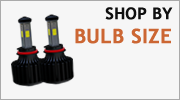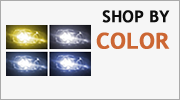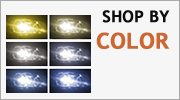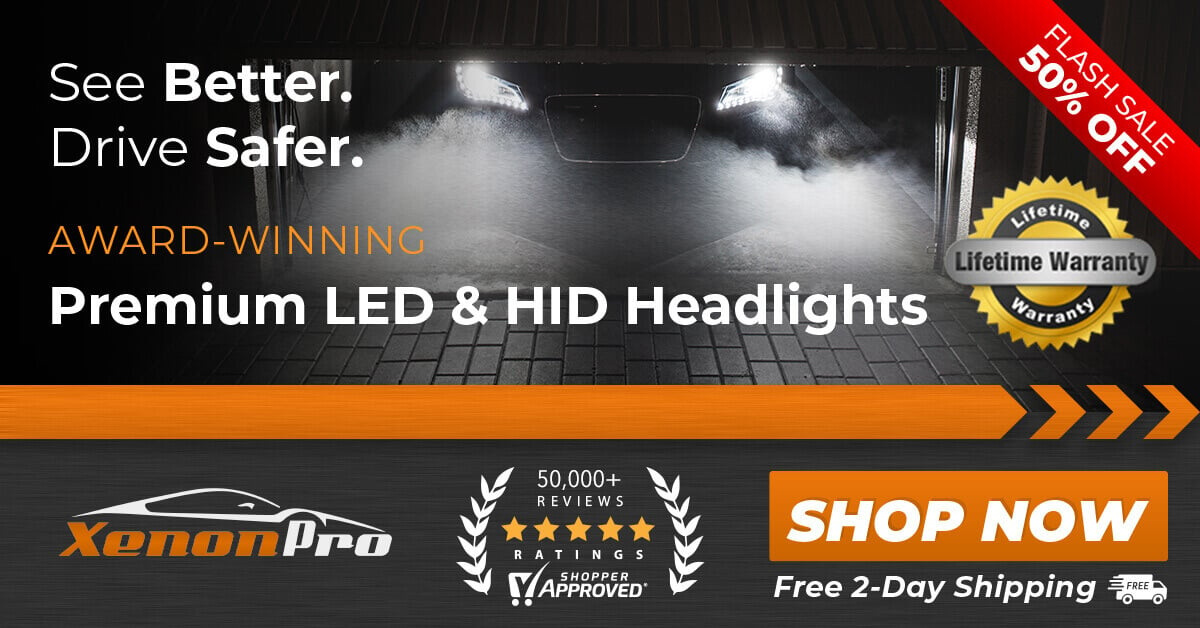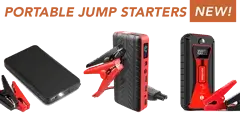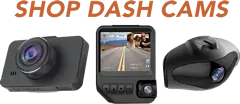
- 1.800.834.8669
- LIVE Chat Support
You have no items in your shopping cart.
The Complete Guide to Fog Lights (LED, HID, Halogen)
How do fog lights work? What are they for? When should you use them? Understanding automotive fog lights.
Last updated: January 12, 2023

Fog lights are automotive lamps that are typically front-facing. Fog lights are designed to improve visibility when driving through rain, snow, fog, and other driving conditions where visibility is impacted.
In this article, we’ll explore fog lights in great detail and go over important subjects like when to use fog lights, the best fog light color, and conclude with some frequently asked questions about fog lights.
What are fog lights?
The purpose of fog lights is to help drivers see better in driving conditions with restricted (low) visibility such as rain, snow, fog, dust, etc. above and beyond the light produced by headlights.

Fog lights also referred to as fog lamps, are car lights that are separate from and found below a vehicle’s headlights. They are typically part of the front bumper.
Unlike headlights, which are found on every road vehicle, fog lights are not. Fog lights are usually equipped with higher trim models and luxury vehicles. Fog lights are therefore not required by law.
How do fog lights work?
Fog lights help to see the road better in driving conditions with poor visibility because of their positioning and angle.
Headlight low beams (dims) and high beams (brights) are positioned and designed to throw light far in front of the vehicle. Although this is great during normal driving conditions, it actually causes the light to reflect back to the driver when pointed at rain, fog, snow, etc., which in turn can be blinding and even dangerous.
Fog lights, on the other hand, are close to and pointed to the ground at a sharp angle, illuminating the area immediately in front of the vehicle. The sharp angle of the fog lamps enables the light to cut through the rain, fog, snow, etc., allowing the light to hit the ground instead of reflecting it back to the driver.

How to make fog lights brighter
If your vehicle is equipped with fog lights they will generally be either halogen or LED for newer luxury vehicles.
If you fortunate enough to have factory (OEM) LED fog lights but you’re still not satisfied with the light output, unfortunately, there is nothing you can do to improve the brightness. The light output you’re getting is as good as it gets.
If your car or truck has factory halogens, however, you definitely improve the light output by upgrading to LED fog lights or Xenon HID fog lamps.
Halogen systems can be converted to LED or HID quite easily thanks to conversion kits. The bulbs and components will fit right into your existing fog assembly and plug in the same way as your original halogen bulbs. To learn more about conversion kits, visit our guide on putting LED or HID bulbs in stock halogen assemblies.
Yellow fog lights
One of the most discussed topics of fog lights is color. Yellow fog lights have long been crowned as being the best for helping drivers when facing rain, fog, snow, etc. But is this really true?

Scientifically speaking, light with shorter wavelengths and higher frequency such as purple and blue are the most reflective while longer wavelengths and lower frequency light such as yellow and red and the least reflective. However, this is only true for tiny particles significantly smaller than raindrops or snowflakes.
Yellow fog lights are actually better simply because yellow is a soothing color our eyes and mind can process rapidly, easily, and for a long period of time.
In the context of fog lights, this means that yellow is indeed preferred over colored lights. You can read more on this topic here.
On the other hand, in the context of headlights, white light is preferred over yellow or darker colors as it will produce more light output. Feel free to read our LED Color Guide and our Xenon HID Color Temperature Guide to learn more about colored lights.
What's the difference between fog lights and headlights?
For some, cars are confusing machines, and the complexity of the different lighting systems doesn’t make things any easier!
In brief, headlights are angled to illuminate at least 50 feet ahead and used for nighttime driving. Fog lights are angled to illuminate just 10 to 25 feet ahead and used specifically for seeing better in weather conditions where visibility is low such as rain, fog, snow, and dust.
Headlights vs. Fog lights
| Headlights | Fog Lights | |
| Light Angle | High | Low |
| Beam Pattern | Narrow | Wide |
| Throw | 50+ ft. | 10 to 25 ft. |
| Functions | 2 | 1 |
| Required by law | Yes | No |
| Activation | Automatic or maunal | Manual |
| Typical Colors | Yellowish (halogen) or white (LED/HID) | Yellow (halogen) or white (LED) |
Headlights have two electrical functions, the low beams (dims), which are used for everyday driving, and the high beams (brights), which are used selectively and activated manually in particularly dark roads. Fog lights only have one electronic function. For more information on this topic, visit our guide on the difference between low beams and high beams.
Other fog light colors
Fog lights have historically come in a yellowish, yellow or amber color. This can be due to the bulb itself immitting a warmer color light and in some cases due to a tint on the fog lamp assembly. As explained earlier, warmer colored lights have less of a glare effect when reflected, hence why yellow fogs are ideal.
In more recent times with the popularity of LEDs in newer and luxury vehicles, fog lights are increasingly white but what about other fog light colors?
Although it is not recommended if visibility is your main objective, colored lights are available. In fact, here at XenonPro we offer LED fog lights in 4 different colors and Xenon HID fog lights in 7 different colors ranging from yellow to white to purple!
Frequently Asked Questions:
Yes. Yellow light is the least reflective. Rain, snow, fog, dust can be highly reflective so yellow is ideal to help drivers see better in low visibility situations.
Although yellow is better than white, a warm white or pure white is still fine and better than cooler colors such as blue or purple, which can be very reflective.
Yes. Aftermarket fog lights are available for many vehicles. Some can be easily added while others require quite a bit of work ranging from installing a new bumper to major electrical work.
Yes. Fog lights were designed to improve visibility in rainy, snowy, and foggy weather.
Fog lights should be aimed directly in front of the car, throwing a maximum of 25 ft in front of the car. Aiming the too high will make the ineffective and similar to regular headlights.
Yes. LEDs are perfectly fine for fog, rain, or snow.
Somewhat. Fog lights are designed and angled to penetrate rain, snow, and fog. In clean weather conditions, you will probably not even notice your fog lights while your headlights are on.
No. This is illegal and should not be done. If you’re driving and your headlights burn out, you can temporarily use your fogs since it’s better than nothing. We strongly recommend fixing/replacing your headlight bulbs right away when they go out.
It is at night (see the question above). During the day, it is not illegal to drive with your fogs only.
No. Fog lights produce a lot more light and at a much greater distance than fog lights. Fog lights are not designed to be bright but rather to help drivers when driving through heavy rain, snow or fog.
No. Due to their sharp angle towards the ground, fog lights will never be blinding unless aimed completely wrong.
No. Rear fog lights are illegal in the U.S. because people might confuse them for brake lights since rear fog lights are red. In the U.S., it is common to use hazard lights when the weather and visibility get very bad.
Rear fog lights are common in Europe and designed to protect the back of your vehicle during bad weather conditions.
Disclaimer: The information contained on this page is provided free of charge to our visitors. It was prepared to the best of our abilities and with all the information available to us at the time of writing. We reserve the right to change, remove or update any information contained on this page at any time and without notice to improve its accuracy. The most reliable method to determine the bulb size is by pulling your actual bulb(s) and reading the part number indicated directly on the bulb. The information compiled on this page comes with no guarantees or warranties.



